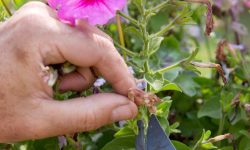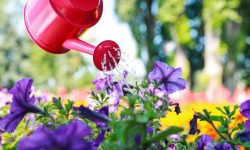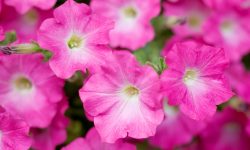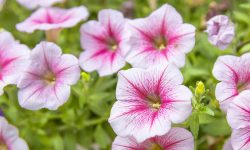Hydrangeas are one of the most beloved flowering shrubs in American gardens. Their large, colorful blooms and lush foliage make them a favorite choice for adding beauty and structure. Knowing when to grow hydrangeas is essential to achieve healthy growth and vibrant flowers each season. Proper timing affects root establishment, bloom production, and the overall health of the shrub.
Understanding the seasonal needs of hydrangeas helps gardeners plan successful planting and maintenance routines. Soil preparation, sunlight, and watering schedules are all influenced by the planting period. By following seasonal guidance, you can ensure your hydrangeas thrive, producing abundant, colorful blooms. This article provides detailed advice for planting, caring, and nurturing hydrangeas throughout the year, helping both beginners and experienced gardeners achieve stunning results.
Best Seasons to Plant Hydrangeas
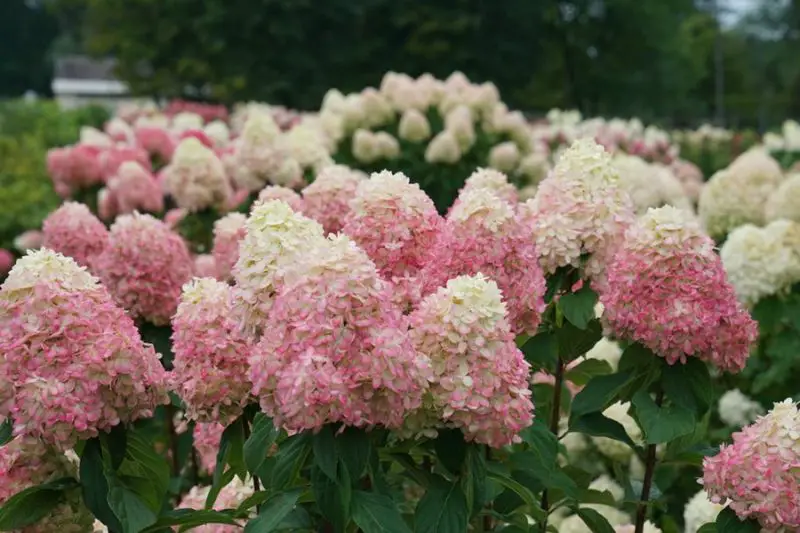
Choosing the right season to plant hydrangeas is crucial for establishing strong roots and promoting vibrant blooms. Spring and early fall are generally the most favorable times. During these periods, soil temperatures are warm enough to encourage root development, while the air remains cool enough to minimize stress on young plants. Planting during extreme heat or frost can inhibit root establishment and delay flowering, making careful timing essential.
Spring planting provides hydrangeas the advantage of a long growing season ahead. The young shrubs can establish roots while temperatures gradually rise, allowing them to adapt to summer conditions. Adequate rainfall in spring helps maintain consistent moisture, which is critical for root growth. Similarly, early fall planting offers cooler temperatures and reduced sunlight intensity, which lowers water evaporation and prevents heat stress. Both spring and fall planting ensure a solid start, giving hydrangeas a higher chance of thriving and producing abundant, vibrant blooms in their first flowering season.
Regional climate variations also play a significant role in deciding the planting schedule. In northern climates, waiting until after the last frost prevents damage to tender roots and buds. In southern regions, early fall planting avoids the peak summer heat, reducing the need for frequent watering and minimizing plant stress. By understanding these seasonal and regional factors, gardeners can optimize hydrangea growth, promote healthy foliage, and enjoy vibrant flowers year after year. Proper timing lays the foundation for long-term success, ensuring that your hydrangeas remain a stunning focal point in the garden.
Preparing the Soil for Hydrangeas
Proper soil preparation is essential for hydrangeas to thrive and produce vibrant blooms. These shrubs prefer well-draining soil rich in organic matter. Before planting, test the soil to determine pH levels and nutrient content. Hydrangeas are sensitive to soil acidity, which can affect bloom color in certain varieties. Amending the soil with compost or well-rotted manure improves texture, fertility, and moisture retention, creating an ideal environment for root growth.
Loosening the soil to a depth of at least 12 inches allows roots to spread easily and access nutrients efficiently. Removing rocks, debris, and weeds reduces competition and prevents drainage issues. Mixing in organic amendments ensures a balanced supply of nutrients, encouraging strong stems, healthy foliage, and abundant flowers. Mulching the planting area further retains moisture, suppresses weeds, and moderates soil temperature. This step is especially important in warmer climates or during dry periods, as it prevents stress on the young plants.
Understanding the soil’s natural characteristics also helps guide additional adjustments. For instance, if the soil is too sandy, incorporating clay or organic matter can improve water retention. Conversely, heavy clay soils benefit from compost or coarse sand to enhance drainage. By carefully preparing the soil, gardeners provide hydrangeas with a solid foundation for long-term growth. Well-prepared soil supports healthier roots, stronger stems, and more vibrant flowers, ensuring your hydrangeas flourish and become a stunning focal point in your garden.
Choosing the Right Hydrangea Variety
Selecting the appropriate hydrangea variety is essential for achieving vibrant blooms and ensuring the plant thrives in your garden. Hydrangeas come in several popular types, each with unique growth habits, flower shapes, and bloom colors. Understanding these differences helps gardeners choose a variety suited to their climate, soil, and sunlight conditions. Common types include mophead, lacecap, panicle, and smooth hydrangeas, each offering distinct visual appeal and care requirements, making them suitable for different garden styles.
Mophead hydrangeas are celebrated for their large, rounded blooms and vivid colors. They perform best in partial sunlight and require consistent moisture to maintain strong stems and healthy foliage. Lacecap hydrangeas produce flat-topped blooms with decorative petals around the edges, adding subtle elegance and texture to garden beds. Panicle hydrangeas are hardy, thriving in full sun and tolerating colder climates. Smooth hydrangeas are low-maintenance and bloom reliably even in less-than-ideal conditions, making them perfect for beginner gardeners or high-traffic areas where resilience is needed.
Additional factors should guide the choice of hydrangea variety. Soil pH can influence flower color in certain species, such as mophead and lacecap hydrangeas, where acidic soils produce blue blooms and alkaline soils result in pink blooms. Gardeners should also consider bloom timing, overall size, and growth habit to ensure the plant fits well in the landscape and does not overcrowd other plants. By selecting the right variety, gardeners can enjoy abundant flowering, robust growth, and a stunning, long-lasting display that enhances the beauty of any garden.
Planting Hydrangeas Step by Step
Proper planting is essential for hydrangeas to establish strong roots and produce vibrant blooms. Begin by selecting a location that provides the appropriate amount of sunlight. Most hydrangeas thrive in partial sun, receiving morning sunlight and afternoon shade. Choosing a site with good air circulation reduces the risk of fungal diseases. Preparing the soil with organic matter such as compost or well-rotted manure improves drainage, fertility, and moisture retention, creating an ideal environment for root growth.
When planting, dig a hole twice as wide and slightly deeper than the root ball. Carefully remove the hydrangea from its container, gently loosening any compacted roots to encourage outward growth. Position the plant so that the top of the root ball aligns with the surrounding soil level. Fill the hole with amended soil, pressing lightly to remove air pockets that can dry out roots. Water thoroughly immediately after planting to settle the soil and reduce transplant shock. Adding a 2–3 inch layer of mulch around the base helps retain moisture, suppress weeds, and regulate soil temperature, promoting steady growth and healthy foliage.
After planting, consistent care is vital for successful establishment. Water regularly, especially during dry spells, ensuring soil remains moist but not waterlogged. Fertilize according to the hydrangea variety, as some types respond to specific nutrients for optimal bloom size and color. Monitor for pests and diseases, removing affected foliage promptly to prevent spread. Following these steps carefully allows hydrangeas to establish strong roots, develop vigorous stems, and produce abundant, colorful flowers. With patience and proper care, your garden will enjoy a stunning hydrangea display for years to come.
Watering and Fertilizing Hydrangeas
Proper Watering for Hydrangeas
Hydrangeas require consistent moisture to maintain lush foliage and produce vibrant blooms. Water deeply at the base of the plant, ensuring the root zone receives adequate hydration. Shallow or frequent watering encourages weak, surface-level roots and reduces drought tolerance. Early morning watering is ideal, as it minimizes evaporation and prevents fungal diseases caused by prolonged moisture on leaves overnight. Consistent moisture helps hydrangeas withstand heat and maintain steady growth.
Mulching around the base is crucial for retaining water, suppressing weeds, and moderating soil temperature. Organic mulches like shredded bark, pine needles, or compost work best. Avoid overwatering, which can cause root rot and nutrient leaching, negatively affecting flower production. During extremely dry spells, increase watering frequency while ensuring good drainage. Proper watering practices help establish strong roots, promote healthy stems, and encourage abundant, vibrant blooms throughout the growing season, giving hydrangeas the resilience they need to thrive year after year.
Fertilizing Hydrangeas Effectively
Fertilization enhances bloom size, color, and overall plant health. Use a balanced fertilizer tailored to the hydrangea variety, applying during active growth in spring and early summer. Acid-loving varieties benefit from fertilizers that maintain soil acidity, promoting blue flowers in mophead and lacecap types. Avoid late-season fertilization to prevent tender new growth, which may not survive winter frost. Proper timing ensures nutrients support flowers and foliage rather than weakening the plant.
Monitoring soil pH and nutrient levels is critical for effective fertilization. Organic options such as compost, fish emulsion, or well-rotted manure provide a gradual release of nutrients, supporting steady growth without overloading the plant. Observe plant response after fertilizing to adjust type or amount of fertilizer if growth appears excessive or blooms underperform. Consistent fertilization, combined with proper watering, allows hydrangeas to thrive, producing vibrant flowers and healthy foliage, ensuring your garden displays beautiful hydrangea blooms season after season.
Pruning Hydrangeas for Maximum Blooms
Pruning hydrangeas is essential to maintain their shape, encourage healthy growth, and promote abundant blooms. The timing and technique depend on the specific variety, as some bloom on old wood while others bloom on new growth. Correct pruning ensures strong stems, reduces disease risk, and enhances air circulation within the plant, preventing fungal infections. Proper pruning also helps maintain a visually appealing structure and prevents the plant from becoming overgrown or leggy.
For mophead and lacecap hydrangeas, which bloom on old wood, pruning should occur immediately after flowering. Remove dead, damaged, or crossing branches and trim lightly to shape the plant. Avoid heavy pruning in late fall or winter, as this can remove next year’s flower buds, reducing bloom potential. Panicle and smooth hydrangeas bloom on new wood and can be pruned in late winter or early spring. Cutting back these varieties encourages vigorous growth, resulting in larger, more abundant blooms during the flowering season. Knowing which type you have ensures that pruning maximizes flower production without harming the plant.
Regular pruning also supports overall plant health and garden aesthetics. Removing spent flowers and older stems stimulates new growth and encourages more blooms in the following season. Pruning weak or overcrowded branches improves sunlight penetration and air circulation, reducing pest and disease risks. By carefully following proper pruning techniques and timing, gardeners can ensure hydrangeas remain vibrant, healthy, and visually stunning, producing colorful and abundant blooms year after year while enhancing the beauty of any garden landscape.
Dealing with Pests and Diseases
Common Pests Affecting Hydrangeas
Hydrangeas can be affected by a range of pests, including aphids, spider mites, and scale insects, which can compromise plant health and reduce flower production. Aphids feed on sap, causing curling or yellowing leaves, distorted new growth, and sticky residue called honeydew. This honeydew can attract ants and lead to sooty mold. Spider mites, which thrive in hot, dry conditions, create fine webbing on leaves, causing discoloration, leaf drop, and weakened stems. Scale insects attach to stems and leaves, slowly extracting nutrients, which can lead to stunted growth and branch dieback if infestations are severe.
Early detection and proactive management are crucial to prevent widespread infestations. Regularly inspect hydrangeas, focusing on new shoots, buds, and leaf undersides where pests often hide. Organic solutions like insecticidal soap, neem oil, or horticultural oil effectively manage these pests without harming beneficial insects. Encouraging natural predators such as ladybugs, lacewings, and predatory mites helps maintain a balanced ecosystem. Maintaining plant health through proper watering, fertilization, and pruning further reduces vulnerability. By monitoring, treating early, and supporting beneficial insects, gardeners ensure their hydrangeas remain healthy, vigorous, and capable of producing vibrant, abundant blooms throughout the season.
Common Diseases and How to Manage Them
Hydrangeas are prone to fungal and bacterial diseases such as powdery mildew, leaf spot, and botrytis blight, which can severely damage foliage and flowers. Powdery mildew appears as white, powdery patches on leaves and stems, especially in humid or poorly ventilated areas. Leaf spot produces dark, circular lesions that can coalesce, causing premature leaf drop and weakening the plant. Botrytis blight affects flowers and stems, causing rotting in damp conditions and reducing overall bloom quality. If unmanaged, these diseases can stunt growth and limit flowering potential.
Preventative care is the most effective strategy for disease management. Plant hydrangeas with adequate spacing to allow airflow, water at the base to avoid wetting leaves, and promptly remove fallen or infected leaves to reduce fungal spores. Fungicides may be applied for persistent problems, following label instructions carefully. Regular pruning to remove overcrowded or damaged branches enhances sunlight penetration and airflow, reducing disease risk. Maintaining strong, healthy plants through proper soil preparation, fertilization, and irrigation improves resistance to disease. With these practices, hydrangeas can flourish, producing lush foliage and vibrant, long-lasting blooms that enhance any garden year after year.
Seasonal Care for Hydrangeas
Spring Care for Hydrangeas
Spring is a critical time for hydrangeas, as new growth and flower buds begin to emerge. Gardeners should start by cleaning up winter debris, removing dead leaves, fallen branches, and any remaining mulch that may harbor pests or disease. Applying a fresh layer of organic mulch, such as shredded bark or compost, helps conserve moisture, regulate soil temperature, and suppress weeds. Pruning is essential for varieties that bloom on new wood, like panicle and smooth hydrangeas, to encourage strong stems and abundant flowers. Light pruning also improves airflow, reducing the risk of fungal infections during warm, wet spring weather.
Fertilization in early spring supports vigorous growth and bloom development. Use a balanced, slow-release fertilizer or organic options such as compost or well-rotted manure to improve soil structure and provide essential nutrients. Regular, deep watering ensures the soil remains evenly moist, promoting healthy root systems and preparing the plant for a successful blooming season. Observing plants for early signs of pests or disease allows prompt intervention, preventing damage. With consistent spring care, hydrangeas develop strong stems, lush foliage, and the foundation for vibrant, long-lasting blooms throughout the year.
Summer Care for Hydrangeas
Summer care focuses on supporting flowers and preventing stress caused by heat, drought, or pests. Hydrangeas require consistent, deep watering to maintain vibrant blooms and prevent wilting, particularly during prolonged dry spells. Mulching is critical during summer to retain soil moisture and moderate temperature fluctuations. Deadheading spent flowers encourages additional blooms, while trimming overcrowded stems enhances airflow and light penetration, maintaining plant health. Hydrangeas may also benefit from staking taller varieties to support heavy flower heads and prevent breakage in summer storms.
Pest management is important during summer, as aphids, spider mites, and scale insects become more active. Using organic insecticidal sprays or encouraging natural predators like ladybugs helps control infestations without harming beneficial insects. Fertilization should be applied cautiously to avoid excessive leafy growth at the expense of flowers. Providing partial shade during extreme heat protects delicate blooms, while ensuring soil drains well prevents root damage. By combining proper watering, mulching, deadheading, and pest management, hydrangeas remain healthy and productive, producing abundant, colorful flowers throughout the summer season.
Fall Care for Hydrangeas
Fall care prepares hydrangeas for winter dormancy and ensures next year’s blooms. Reduce watering as growth slows, but maintain adequate moisture to prevent plant stress. Remove fallen leaves, spent blooms, and debris to prevent fungal diseases and improve garden hygiene. For varieties that bloom on old wood, avoid heavy pruning to protect flower buds for the following season. Light trimming may be done to maintain shape and remove weak or damaged stems, enhancing overall plant health and structure.
Mulching is particularly important in fall, providing insulation for roots against fluctuating temperatures and frost. Fertilization should be minimal or avoided to prevent encouraging new growth that may not survive winter. Inspect plants for late-season pests or disease, removing any affected foliage promptly. Fall care also includes planning for winter protection, such as covering delicate varieties with burlap or applying additional mulch for insulation. Proper fall maintenance ensures hydrangeas enter winter healthy, strong, and ready to produce vibrant, abundant blooms in the next growing season.
Troubleshooting Common Problems
Wilting and Yellowing Leaves
Wilting or yellowing leaves are common signs that hydrangeas are experiencing stress. Often, this is caused by inconsistent watering, poor soil drainage, or extreme temperatures. Overwatering can suffocate roots, while underwatering prevents essential nutrients and water from reaching the plant. Both situations reduce flower quality and overall vigor. Additionally, compacted soil or heavy clay can limit root growth, exacerbating leaf yellowing and wilting.
To address these issues, inspect soil moisture regularly and adjust watering routines. Ensure deep, consistent watering while allowing excess water to drain away. Mulching with organic materials helps retain moisture, suppress weeds, and regulate soil temperature. Amending soil with compost improves structure, nutrient availability, and drainage. Maintaining proper sunlight exposure and protecting plants during heat waves further reduces stress. Regular monitoring and timely intervention help hydrangeas recover, producing vibrant leaves and abundant blooms throughout the growing season.
Bud Drop and Poor Flowering
Hydrangeas sometimes fail to bloom or experience bud drop due to improper pruning, late frosts, or nutrient deficiencies. Pruning at the wrong time may remove flower buds, especially for old-wood blooming varieties. Cold snaps in early spring can damage developing buds, reducing flower numbers. Nutrient imbalances, particularly low phosphorus or excess nitrogen, can limit bloom formation and encourage leafy growth over flowers. Environmental stress such as drought, extreme heat, or insufficient sunlight can also contribute to poor flowering.
To prevent these problems, prune according to the hydrangea variety and avoid late-season cuts on old-wood bloomers. Protect young buds from unexpected frost using garden fabric or covers. Fertilize with a balanced fertilizer formulated for flowering shrubs to support bud development. Provide adequate sunlight, proper watering, and effective pest control. These practices ensure stronger flower bud formation and reduce bud drop, helping hydrangeas produce abundant, healthy blooms and maintain a vibrant, aesthetically pleasing garden display.
Pest and Disease Damage
Pest infestations and diseases can significantly affect hydrangea health and bloom quality. Aphids, spider mites, and scale insects feed on sap, weakening plants and causing distorted leaves or stunted growth. Fungal diseases like powdery mildew, leaf spot, and botrytis blight damage leaves, stems, and flowers, reducing the plant’s vigor and aesthetic appeal. Moist, poorly ventilated conditions often exacerbate fungal issues, while overcrowded plants are more susceptible to pest infestations.
Effective management begins with regular inspections to identify early signs of damage. Remove affected leaves and branches promptly to prevent disease spread. Apply organic pest control solutions such as neem oil, horticultural soap, or predatory insects for safe, sustainable management. Use fungicides selectively for persistent fungal problems and ensure proper pruning, spacing, and watering practices to reduce risk. Maintaining strong, healthy plants enhances resilience, allowing hydrangeas to continue producing vibrant, long-lasting blooms despite minor pest or disease challenges.
FAQ About When to Grow Hydrangeas
When is the best time to plant hydrangeas?
The best time to plant hydrangeas is early spring or fall, allowing roots to establish before extreme temperatures. Plant in well-drained soil with partial sunlight for optimal growth. Proper planting ensures healthy roots, strong stems, and vibrant blooms in the first season.
How often should I water hydrangeas?
Hydrangeas need consistent, deep watering, especially during dry spells. Avoid shallow watering, as it promotes weak roots. Mulching helps retain soil moisture and regulates temperature. Adjust watering based on rainfall, soil type, and plant size to maintain healthy growth and vibrant flowers.
What is the correct way to prune hydrangeas?
Pruning depends on bloom type. Old-wood bloomers should be pruned after flowering, while new-wood varieties can be pruned in late winter or early spring. Proper pruning encourages healthy stems, improves airflow, and maximizes flower production while preventing disease.
How do I prevent pest and disease issues?
Regularly inspect plants for aphids, spider mites, scale insects, or fungal diseases. Remove affected leaves, improve airflow, and apply organic solutions like neem oil or insecticidal soap. Healthy, well-maintained plants are more resilient and continue producing vibrant blooms.
Can hydrangeas survive cold winters?
Most hydrangea varieties can survive cold winters with proper protection. Mulch roots, prune carefully, and consider burlap or covers for delicate types. Protecting plants during frost ensures buds and stems remain healthy for the next flowering season.
Conclusion
Caring for hydrangeas throughout the year ensures vibrant blooms and healthy growth. By understanding the right seasons to plant, fertilize, water, and prune, gardeners can optimize flower production and maintain strong, resilient plants. Monitoring for pests, diseases, and environmental stress prevents damage and supports long-term health. Seasonal care, tailored to spring, summer, and fall needs, combined with proper pruning and nutrient management, guarantees lush foliage and abundant, colorful flowers. With patience, attention to detail, and consistent care, hydrangeas can transform any garden into a stunning, colorful display that delights year after year.


